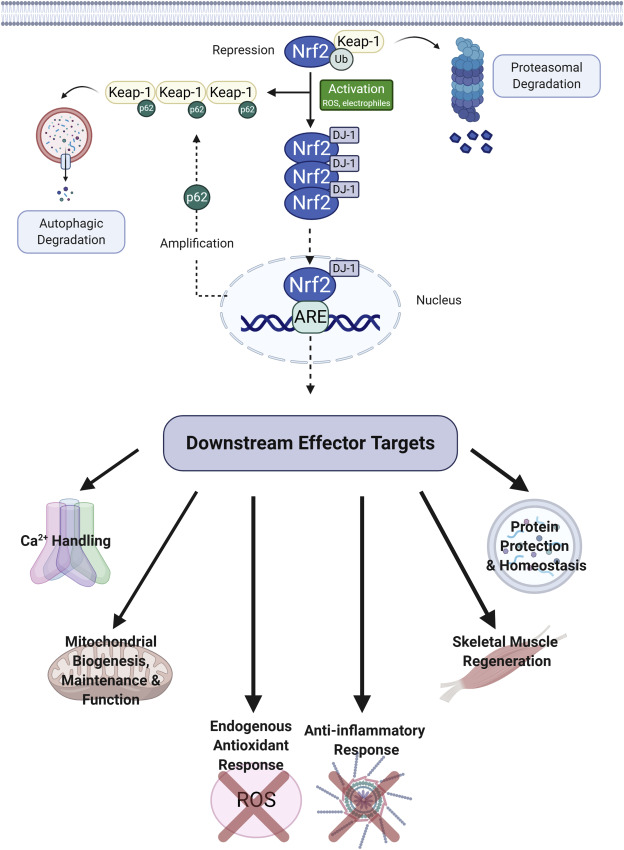This chapter advances SDG 6, 7, and 11 by examining the role of resource recovery technologies in reducing the demand of fossil fuels and conventional fossil-based mineral fertilizers, including through the production of sustainable biofuels such as hydrogen, syngas, and bio-oil.
Imbalances in redox homeostasis can result in oxidative stress, which is implicated in various pathological conditions including the fatal neuromuscular disease Duchenne Muscular Dystrophy (DMD). DMD is a complicated disease, with many druggable targets at the cellular and molecular level including calcium-mediated muscle degeneration; mitochondrial dysfunction; oxidative stress; inflammation; insufficient muscle regeneration and dysregulated protein and organelle maintenance. Previous investigative therapeutics tended to isolate and focus on just one of these targets and, consequently, therapeutic activity has been limited. Nuclear erythroid 2-related factor 2 (Nrf2) is a transcription factor that upregulates many cytoprotective gene products in response to oxidants and other toxic stressors. Unlike other strategies, targeted Nrf2 activation has the potential to simultaneously modulate separate pathological features of DMD to amplify therapeutic benefits. Here, we review the literature providing theoretical context for targeting Nrf2 as a disease modifying treatment against DMD.
This Article supports SDG 5 in providing insights into the feminist geographies in the digital space of online gaming.
The use of smart conversational agents for the detection of neuropsychiatric disorders is an emerging and promising field of research using AI.
LexisNexis Legal & Professional has created a rule of law impact tracker using a range of data sets. The rule of law impact tracker is an interactive tool which quantifies the relationship between the rule of law and social and economic development. The rule of law plays a vital part in underpinning all of the SDGs and in particular the targets of SDG 16 to promote peaceful and inclusive societies for sustainable development, provide access to justice for all and build effective, accountable and inclusive institutions at all levels.
Background: Sexual dysfunction and sexual distress are common during pregnancy, but the effects of exposure to sexual violence on sexual dysfunction and sexual distress in pregnant women is unknown. Aim: The aim of this study was to determine the effects of sexual violence on female sexual dysfunction and sexual distress. Methods: This is a descriptive study. Data were collected between December 2019 and April 2020 from 605 pregnant women.
This book chapter advances SDG 3 by explaining how advances in technology and research methodology now permit us to assign more certainty to the magnitude of genetic susceptibility.
Targeted interventions have important under-explored potential for reducing meat consumption. We hypothesized that group-specific interventions targeting reduction for reducer, moderate-hindrance, and strong-hindrance meat eaters would be effective. All participants were randomly assigned to one of three treatment conditions designed for these three meat-eating groups, or to a control condition. Following the intervention, up to 28 days of food diaries were gathered to measure their consumption of animal products, which were weighted according to their greenhouse gas emissions.
Research on the relationship between vegetarianism and subjective well-being (SWB) has produced inconsistent results, which may partly be due to small sample sizes and divergent operationalizations of well-being.
Food waste valorization is a hot topic due to the cornucopia of waste generated and the ensuing detrimental environmental effects. Food is lost or wasted in a variety of means on its way from field to mouth. Once deemed inedible, it is considered a waste, but it still contains first-rate organic material that can be processed and used to create a host of new products, chemicals, or energy. Upgrading food wastes can be performed in a variety of processes.


